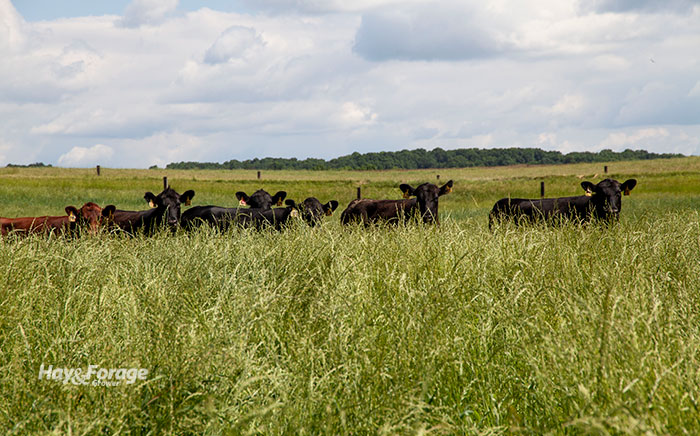Heifers like novel tall fescue, too |
| By Mike Rankin, Managing Editor |
|
|
 Developing high-performance replacement heifers for any beef cow herd is an important enterprise, but one that is often neglected. Heifers don’t make the operator money until their first calf is sold. In other words, they only show up on the expense side of the cash flow ledger. “Most progressive cattlemen have moved to calving heifers at 2 years old, which, when done properly, improves their lifetime productivity relative to calving 3-year-olds,” writes Matt Poore in a recent newsletter from the Alliance for Grassland Renewal. “This is done due to the cost of maintaining an unproductive heifer for an additional year.” Poore, an extension animal scientist with North Carolina State University, notes that farmers have been encouraged to develop heifers to 65% of their mature weight prior to breeding. For a 1,300-pound mature cow, this means she must reach 850 pounds at 15 months of age. Such a goal becomes expensive, especially if forage quality is low. An alternative approach to breeding these heavier heifers is to slow down development and breed animals at about 58% of their mature weight, or around 750 pounds. “These heifers will typically not lose as much weight and condition as the heavier heifers after calving,” Poore explains. “A slow development program means that it is possible to create forage systems where little, if any, supplementation is needed during development,” Poore notes. “A heifer that has a 205-day weight of 550 pounds needs to gain 200 pounds over the next six months to be adequately developed. That’s an average daily gain of only about 1.21 pounds per day, which is very possible to achieve without supplement unless the base forage happens to be toxic Kentucky-31 tall fescue or bermudagrass,” he adds. A novel fit Poore and his research group have done extensive performance evaluations on developing heifers using tall fescue pastures. Their results have shown that heifers on toxic tall fescue pastures have gains similar to novel endophyte tall fescue in stockpile systems after toxin concentrations decline during early winter. Putting heifers on toxic tall fescue in the summer is a different story. In direct comparisons, Poore notes that heifers on the novel endophyte tall fescue gained about 1 pound per day more than those heifers left on the toxic fescue. In total, heifers in the novel endophyte tall fescue system weighed about 100 pounds more than heifers that grazed the toxic fescue throughout the year. “Many of the problems with heifer development on toxic tall fescue can be overcome by feeding additional concentrates, but that is expensive and labor intensive compared to using novel endophyte tall fescue,” Poore shares. Kentucky-31 tall fescue still dominates forage systems across the Fescue Belt. Establishing nontoxic forages such as winter and summer annuals and novel endophyte tall fescue on a percentage of the grazing acres can greatly improve animal performance without dumping dollars into a feedbunk.
|
